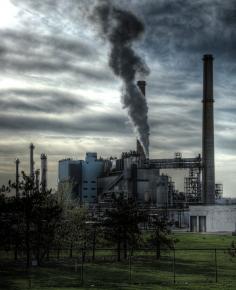The victims of killer coal
, co-author with Jeffrey St. Clair of Red State Rebels: Tales of Grassroots Resistance in the Heartland, looks at a new report that provides damning evidence of the effects of coal on public health.
SO YOU thought smoking cigarettes was bad for your health? Try living next to a coal-fired power plant.
That's the diagnosis that Physicians for Social Responsibility (PSR) relayed to the public in a comprehensive medical study released on November 18 called "Coal's Assault of Human Health." In it, the organization, comprised of physicians and public health experts, claims that coal pollutants damage every major organ in the human body and contribute to four of the top five leading causes of death in the United States.
Not since NASA's James Hansen rang the global warming alarm about coal's major contribution to climate change has there been a more dire call to shut down coal operations in the United States. It is not simply about cleaning up the coal process; it is about halting its production altogether in order to immediately save lives.
At every stage in its life cycle, coal can negatively impact human health, from mining operations, cleaning, transportation to burning and disposing of the combustion waste. PSR reports that many Americans are being affected daily by coal and the exposure is contributing to horrible health problems; heart attacks, lung cancer, strokes and asthma, among others.

"The findings of this report are clear: while the U.S. relies heavily on coal for its energy needs, the consequences of that reliance for our health are grave," said Dr. Alan H. Lockwood, a principal author of the report and a professor of neurology at the University at Buffalo.
RECENTLY, COALSWARM*, an environmental group that monitors coal issues, released a list of 126 coal-fired power plants that are surrounded by 10,000 people or more living within a three-mile radius. Most of these hundreds of thousands of Americans are being exposed to deadly coal particulates without even knowing it.
The majority of the plants are not equipped with the most up-to-date sulfur dioxide reduction equipment, which contributes to lung and heart disease. However, instead of upgrading this technology on coal burners, which can cost hundreds of millions of dollars, a growing number of activists in the climate change movement are pushing for facilities to be closed instead, for the upgrades are essentially prolonging the life of plants that are still polluting in many other ways.
The Obama administration does not seem to be listening. Last June, the Department of Energy poured $1 billion into relaunching FutureGen, a project that intends to show how a plant can capture carbon emissions.
"The FutureGen project holds great promise as a flagship facility to demonstrate carbon capture and storage at commercial scale," U.S Secretary of Energy Steven Chu said at the time. "Developing this technology is critically important for reducing greenhouse gas emissions in the U.S. and around the world."
Chu espouses the notion that coal can be clean, but the FutureGen endeavor, like all other "clean coal" projects, is greenwashing at its dirtiest.
Whenever coal is burned, it releases numerous toxins, and these pollutants have to go somewhere. If not into the air, they will be have to be captured and buried underground, most likely in communities that do not have the resources to fight the coal waste depositories.
Indeed, the coal industry is spending $35 million annually to promote their clean-coal technology, which at this point is nothing more than an advertising motto conjured up by high-paid PR firms.
However, the money that coal companies are spending, not only on public relations, but also on lobbying, seem to be paying off. The current climate legislation hurdling its way through Congress is laden with huge subsidies for the coal industry.
Last May, when the House of Representatives released a version of the climate bill, it became clear which direction the law was heading. In Section 114 of the draft, the coal lobby was able to shore up $11 billion over the next 10 years in a new carbon tax that coal companies would collect and then spend through a private corporation they operate and control. The money would finance, not renewable energy sources, but new coal-fired power plants.
While politicians and industry folks believe coal ought to be a part of our energy future, others admittedly disagree.
The PSR report is a raucous call that our current addiction to dirty coal is not only unsustainable and a major source of global warming pollution, it is also extremely deadly to human life. No matter how much money the coal industry throws at the issue, either in an attempt to mitigate coal's contribution to health problems or to have us believe that coal can be "clean"--people are dying, approximately 24,000 every single year.
"These stark conclusions leave no room for doubt or delay," says Kristen Welker-Hood, PSR's director of environment and health programs. "The time has come for our nation to establish a health-driven energy policy that replaces our dependence on coal with clean, safe alternatives. Business as usual is extracting a deadly price on our health. Coal is no longer an option."
*This author has contributed research to CoalSwarm.


